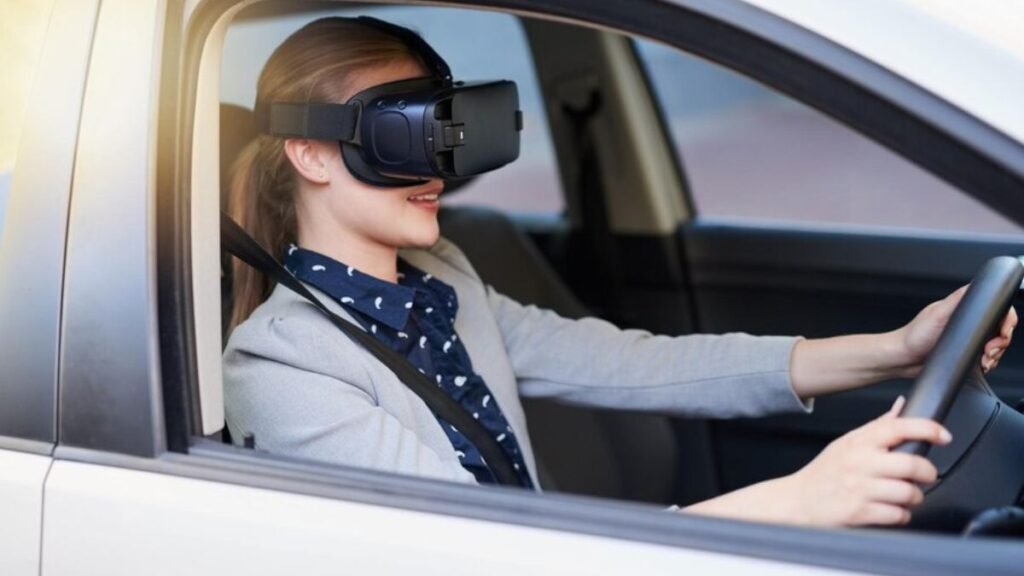In an era where digital presence and virtual identity play a crucial role in how we interact, communicate, and consume content, innovation is no longer optional — it is essential. AVtub, a groundbreaking platform and concept, is leading this charge by transforming traditional broadcasting and social media into immersive, avatar-powered experiences. As we journey deeper into virtual spaces, from social apps to the metaverse, AVtub offers creators and audiences a novel, engaging, and highly personalized way to connect. This article delves into the nuances of AVtub, its underlying technologies, implications, and how it’s reshaping the media landscape.
What is AVtub?
AVtub stands for Avatar Broadcasting, a term derived from the fusion of “avatar” and “YouTube-like” video content sharing. At its core, AVtub refers to the use of virtual avatars, often powered by real-time motion capture and AI, to create and broadcast content across digital platforms. Unlike traditional vlogging or live streaming, AVtub allows creators to remain anonymous or creatively expressive while building highly interactive and entertaining content formats.
The term gained traction alongside the rise of VTubers (Virtual YouTubers), but AVtub goes a step further by expanding the ecosystem beyond entertainment. It encompasses education, business communication, live events, customer service, and even digital therapy sessions — all through digital personas powered by creators or AI. AVtub is not merely a trend; it’s a transformative medium reshaping how we view human interaction in a virtual-first world.
The Technology Behind AVtub
Motion Capture and Facial Recognition
At the heart of AVtub is sophisticated motion capture technology, which captures a user’s facial expressions, lip movements, and body gestures. This information is then transferred in real-time to a 3D or 2D avatar that mimics the user’s expressions, effectively creating a digital twin that can appear in broadcasts, meetings, or recordings.
AI and Voice Modulation
AI plays a critical role in enhancing realism and accessibility. Text-to-speech systems, real-time voice modulation, and deep learning-based expression modeling allow avatars to perform autonomously or semi-autonomously. These systems can also generate synthetic voices or modify the creator’s voice to match the avatar’s persona, adding another layer of immersion.
Augmented and Virtual Reality Integration
AVtub isn’t limited to flat screens. With the rise of AR and VR devices, avatar-based interactions can occur in three-dimensional environments, offering audiences immersive experiences that closely simulate physical presence. This fusion paves the way for virtual concerts, workshops, and conferences that feel tangible, even across continents.
Applications of AVtub
Content Creation and Streaming
Entertainment remains the most prominent field for AVtub. Digital avatars host live streams, play video games, deliver commentary, or even perform in virtual concerts. These avatars allow for a deeper layer of storytelling and world-building, free from the constraints of physical appearance or location.
Education and E-learning
In education, AVtub has massive potential. Teachers can become avatars to hold students’ attention more effectively, especially in younger age groups. Complex topics can be explained by friendly characters or subject-specific personas that make learning more engaging and accessible.
Corporate and Remote Workspaces
The corporate world is beginning to embrace AVtub for presentations, training modules, and virtual meetings. Avatars offer a unique blend of professionalism and creativity, enhancing engagement and reducing video fatigue. It also provides a more inclusive workspace, allowing users to present themselves in ways that make them comfortable, reducing biases based on appearance.
Customer Service and Virtual Assistants
Imagine speaking to a lifelike avatar instead of a faceless chatbot. AVtub technologies are now being implemented in customer support scenarios to create more engaging, human-like conversations. These avatars can be tailored to reflect brand values, enhancing trust and satisfaction.
Digital Therapy and Wellness
Digital therapists powered by AVtub systems offer anonymous, judgment-free interactions for people seeking mental health support. Clients can also choose avatars for themselves, creating a more comfortable setting for vulnerable conversations. This is particularly impactful for younger demographics who are already immersed in digital culture.
Benefits of AVtub

Creative Freedom and Anonymity
One of AVtub’s most celebrated benefits is its ability to grant creators and users complete control over their digital appearance. Whether it’s for privacy, self-expression, or artistic purposes, AVtub allows for identities to be fluid and endlessly customizable.
Scalability and Accessibility
AVtub technology democratizes content creation. Users don’t need expensive filming setups or to be camera-ready. With relatively accessible hardware and software, anyone can create compelling content, making it easier for diverse voices to be heard.
Enhanced Engagement
Avatars naturally pique curiosity and interest. When used in broadcasting, they significantly increase viewer retention and interaction. This is particularly valuable in marketing and education, where maintaining audience attention is often a challenge.
Inclusivity and Representation
AVtub enables representation beyond physical limits. Users with disabilities, individuals from marginalized communities, and those experiencing social anxiety can participate fully in digital spaces through avatars that represent their ideal selves.
Challenges and Considerations
Ethical and Identity Concerns
As with any powerful technology, AVtub presents ethical questions. Who owns an avatar’s likeness? How do we verify identity in a world where anyone can be anything? The potential for deepfakes or impersonation is real and must be managed with clear policies and robust verification systems.
Technical Barriers
Although the technology is becoming more accessible, there’s still a learning curve and cost barrier for some users. High-quality avatar creation and smooth streaming require a degree of technical knowledge and hardware capabilities.
Cultural Sensitivities
Avatars can embody various cultures, genders, and styles, but this must be approached with respect and awareness. Misappropriation or stereotyping through avatar design can lead to backlash and harm, so creators must tread thoughtfully.
AVtub and the Future of Media
As the digital world continues to evolve, AVtub stands as a catalyst in redefining what it means to be present and expressive online. The lines between virtual and real identities are blurring, and AVtub is at the forefront of this evolution. Media platforms are already beginning to integrate avatar tools, and we can expect mainstream adoption in social networks, video conferencing tools, and even dating apps.
Looking ahead, the fusion of AVtub with blockchain could allow users to own their digital avatars and content securely. Interoperability between platforms may lead to a persistent avatar identity that users carry across the web — a true metaverse passport.
Conclusion
AVtub is more than a technological novelty; it is a fundamental shift in how we communicate, create, and connect in a digital-first world. From enhancing privacy and inclusivity to fostering new forms of storytelling and education, AVtub empowers individuals to redefine their presence on their terms. As the technology matures and becomes more embedded in everyday platforms, the era of avatar-powered media will not just complement traditional media — it will redefine it.
For creators, businesses, educators, and anyone with a voice to share, AVtub offers a new frontier: a vibrant, expressive, and boundaryless digital landscape where your identity is only limited by your imagination.
Read more: FintechZoom com: Your Daily Pulse on Finance, Tech & Market Trends


